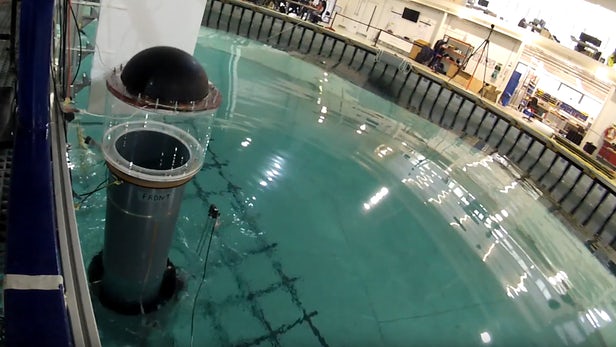
There’s nothing like a good polar vortex to put the power system to the test—unless maybe it’s a summer heat wave.
Energy consulting firm Wood Mackenzie used the opportunity of this event as a chance to measure demand on the power grid. In a detailed study of power demand during the severest week of this 2019 Polar Vortex, from Jan. 27 to Feb. 2, the company examined the question of how a similar-sized 100-percent renewable power grid could have handled the load.
It’s a particularly relevant question in light of the Green New Deal proposed last week by certain members of Congress, which called for eliminating fossil fuel power production by 2030 in an effort to curb global warming.
The study, titled “Performance review: nuclear, fossil fuels, and renewables during the 2019 Polar Vortex,” concluded that even with wind and solar scaled up to produce as much total power as the grid produces now, a lot of people would have been left out in the cold for several hours each day without additional energy storage capacity. “Any mix of wind and solar to serve load would require long-duration storage or optimization of multiple ‘stages’ of shorter duration,” the study concluded.
Storage of between 18 and 40 hours would have been enough to bridge the gaps in the first polar vortex of 2019, the study concluded, as long as there were no transmission bottlenecks from southern regions which produce a lot of solar power and the worst-hit areas of the frozen north. That wasn’t the case in the study, though, which found insufficient power lines from the Southwest to the northern Midwest to bring sufficient renewables to the area.
Wind and solar power are also intermittent, with solar arriving during the day when temperatures aren’t as low.
Wind produced the bulk of the power available in the renewable polar vortex model, and, along with solar power coming online during the daytime peak, was able to cover peak daytime loads. Combined, however, the renewable sources were not enough to cover peak loads during the evening as the sun began to set and after.
This left big gaps on the coldest nights without large battery storage or natural gas and coal to fill in.
The study only considered existing demand for electrical power; it did not address the use of natural gas, oil, or other fossil fuel for heating.
A key controversy in the debate over any effort to eliminate fossil fuels in power production hinges on the question of nuclear power. Despite some early confusion based on a summary fact sheet that was later withdrawn, Congress’s latest Green New Deal resolution doesn’t address the question of nuclear power. It neither forbids it nor specifies it as part of the mix.
In the study, Wood Mackenzie looks at it both ways. Including nuclear power covered some of the base load and some peaks, and made periods of shortfall (when fossil fuels made up the difference) shorter. It did not make up the bulk of power generation at any point.
The study also notes that this polar vortex was far less severe than one that hit in 2014. Utilities withdrew an estimated 17 percent more natural gas per week to meet demand in 2014 than in the latest event, and the 2014 event lasted longer and affected more of the country—which could limit other regions’ ability to assist the hardest-hit areas.
In the latest polar vortex, a renewable grid would need up to 40 hours worth of energy storage to make it through the worst of the cold. In a more widespread and longer chill it would need even more.
In the end, the message is that if the U.S. were to target using 100 percent renewable electricity, it would need significant amounts of battery or other storage capacity and more comprehensive, flexible transmission lines, as well as more renewable generation capacity. And all that is without charging very many electric cars. With more electric cars, the grid would need significantly more power and storage.







